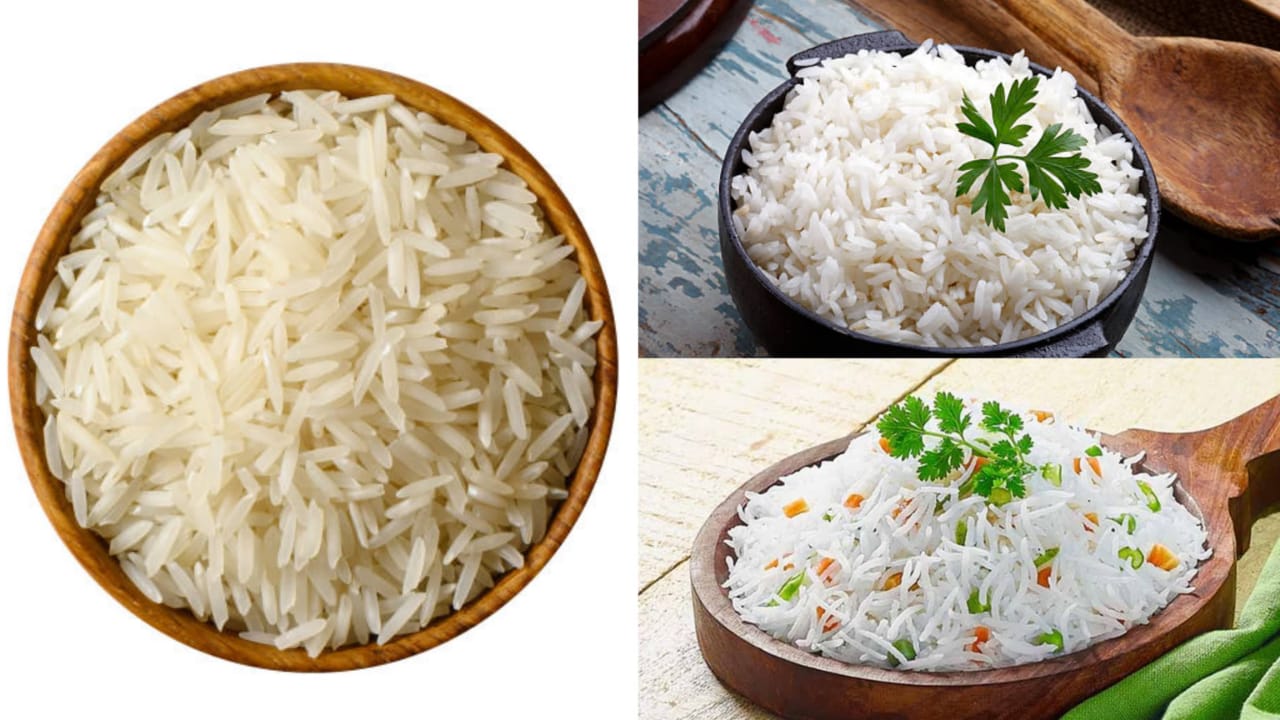Can eating Basmati rice reduce the risk of diabetes by 10%? Learn the secret!
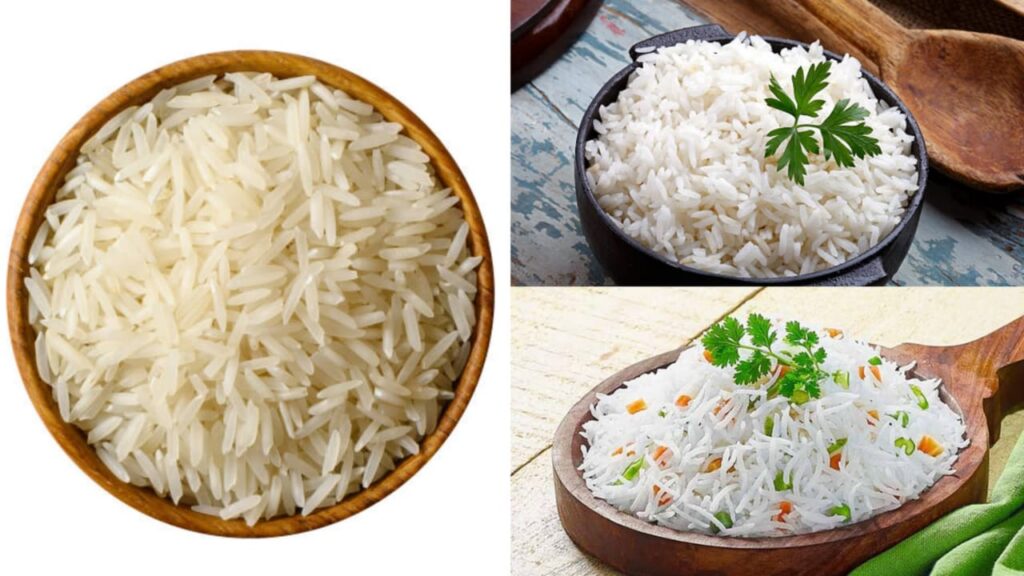
Basmati rice is not just a food grain, but an integral part of the culture, tradition, and diet of the Indian subcontinent. Its long, slender grains, captivating aroma, and tenderness after cooking have made it the king of rice across the world. Whenever we think of biryani, pulao, or payasam for a festival or special occasion, the image of Basmati rice comes to mind. However, its popularity isn’t limited to its taste and aroma; its nutritional value and health benefits also make it unique. Let’s learn more about Basmati rice today.
Table of Contents
ToggleIntroduction
The word Basmati comes from the Hindi word ‘basmati,’ meaning “fragrance.” The authenticity of this name is proven by its extraordinary natural aroma, which originates from a chemical compound called 2-acetyl-1-pyrroline. This rice has been cultivated for thousands of years in parts of India and Pakistan, located in the Himalayan foothills. Its unique geographical location, climate, and cultivation methods influence its quality. After ripening, its grains become almost twice as long, but do not stick together, making it distinct from other rice. Its demand worldwide is so high that it is one of India’s major exporters.
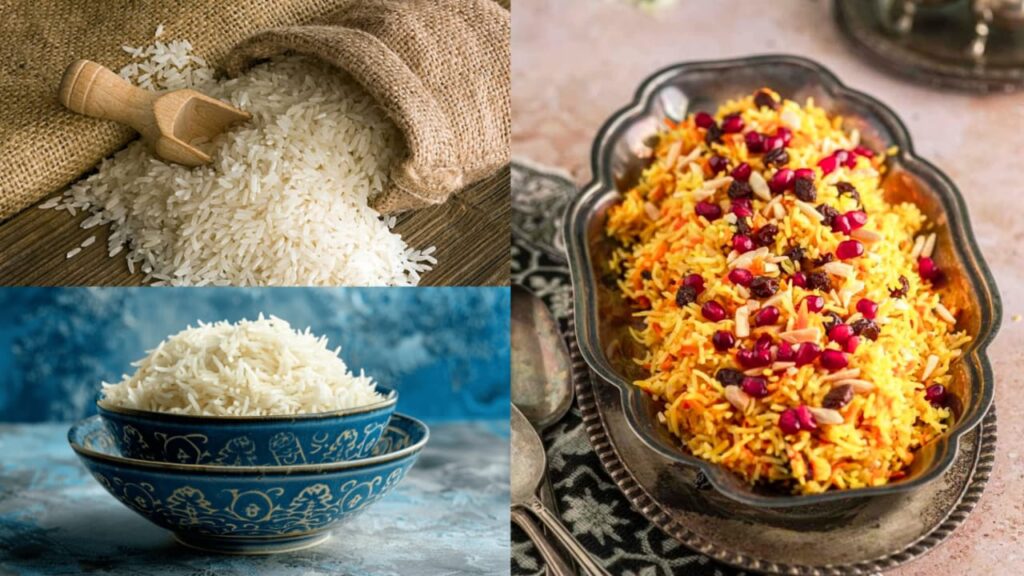
1. Types and Cultivation of Basmati Rice
Basmati rice comes in two main types: white basmati and brown basmati.
White basmati:- This is the most common. In this rice, the husk, bran, and germ are completely removed. As a result, the rice appears white and smooth and takes less time to cook.
Brown basmati:- This rice is milled in which only the hard outer hull is removed, leaving the husk and germ. As a result, the rice is brown in color. It contains much more fiber, vitamins, and minerals than white rice.
Several improved varieties of Basmati rice are grown in India, such as Pusha Basmati-1121 (the world’s longest rice grain), Pusha Basmati-1, Ranbir Basmati, and Dehradun Basmati.
Cultivation:- Basmati rice requires a specific climate and environment. It is cultivated primarily during the rainy season. After planting, the crop takes approximately 3-4 months to mature. After harvesting, the rice is stored for at least 6 months to a year or more. This process reduces the moisture content in the rice, keeping the rice grains crisp and crisp during cooking, and enhancing its aroma.
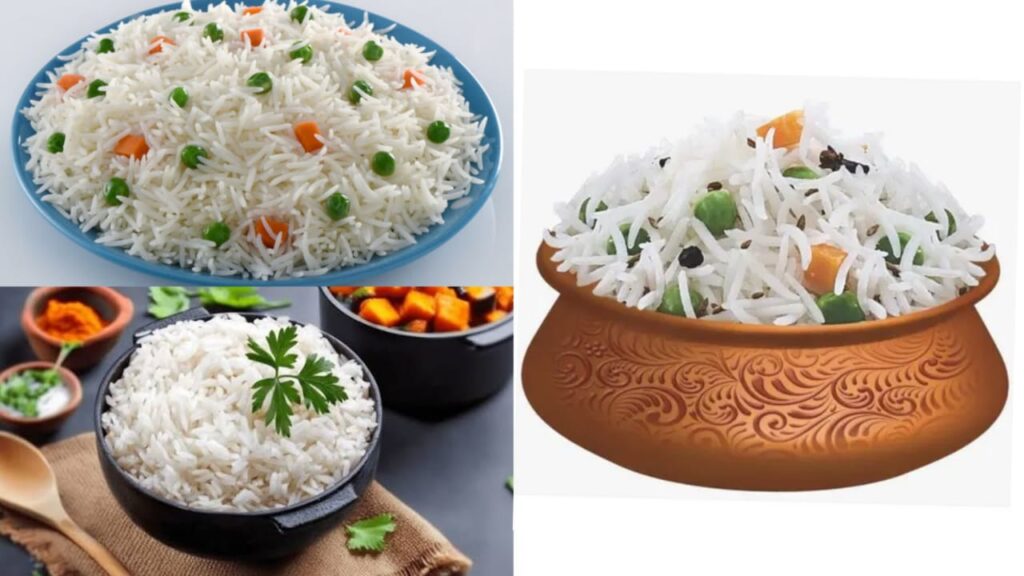
2. Suitable Soil
Choosing the right soil is crucial for successful Basmati rice cultivation. Generally, heavy loam or clay loam soil with good drainage is ideal for Basmati cultivation. The soil’s pH level should be between 5.5 and 7.5. This type of soil helps retain water and nutrients, which aids plant growth and plays a vital role in improving the quality of the rice, especially its aroma and flavor.
3. Nutritional Value and Health Aspects of Basmati Rice
Basmati rice is not only the best in taste and aroma, its nutritional value is also extraordinary. Why it is beneficial for the common man is discussed in detail below.
Nutritional list (Approximate per 100 grams of cooked white basmati rice):
Calories:- About 130-150 kilocalories.
Carbohydrates:- 28-32 grams (main source of energy for the body).
Protein:- 3-4 grams.
Fat:- Less than 0.5 grams.
Fiber:- 0.5-1 grams (its amount is about 3-4 times more in brown basmati).
Vitamins: – It contains important vitamin B complex like thiamine (vitamin B1) and niacin (vitamin B3), which help us convert food into energy.
Minerals:- It contains essential minerals like selenium, magnesium and manganese. Magnesium is beneficial for bones and nervous system, while selenium is a powerful antioxidant.
Health Benefits:
Relatively good for diabetics:- Basmati rice has a relatively low glycemic index (GI) compared to white rice (between 50-58). The glycemic index is a measure of how quickly a food can increase blood sugar levels. Foods with a low GI release sugar into the blood slowly, so blood sugar does not increase suddenly. Therefore, diabetics can eat basmati rice in moderation (of course, as per the doctor’s advice).
Good for the heart:- Brown basmati rice contains a lot of fiber. This fiber helps reduce the level of bad cholesterol (LDL) in the blood and reduces the risk of heart disease. In addition, the magnesium in it helps control blood pressure.
Aids in Digestion:- The fiber in brown basmati improves digestion and helps in relieving problems like constipation. It also helps in the growth of good bacteria in the gut.
Helps in Weight Management:- The presence of fiber helps in keeping the stomach full for a longer period, which reduces the tendency to eat repeatedly. This makes it easier to control weight.
Gluten-Free:- Basmati rice is a safe and healthy option for those who are gluten sensitive or suffer from celiac disease.
Low in Arsenic:- Compared to many other rices, basmati rice has been found to have lower levels of arsenic, which is a heavy metal and harmful to the body.
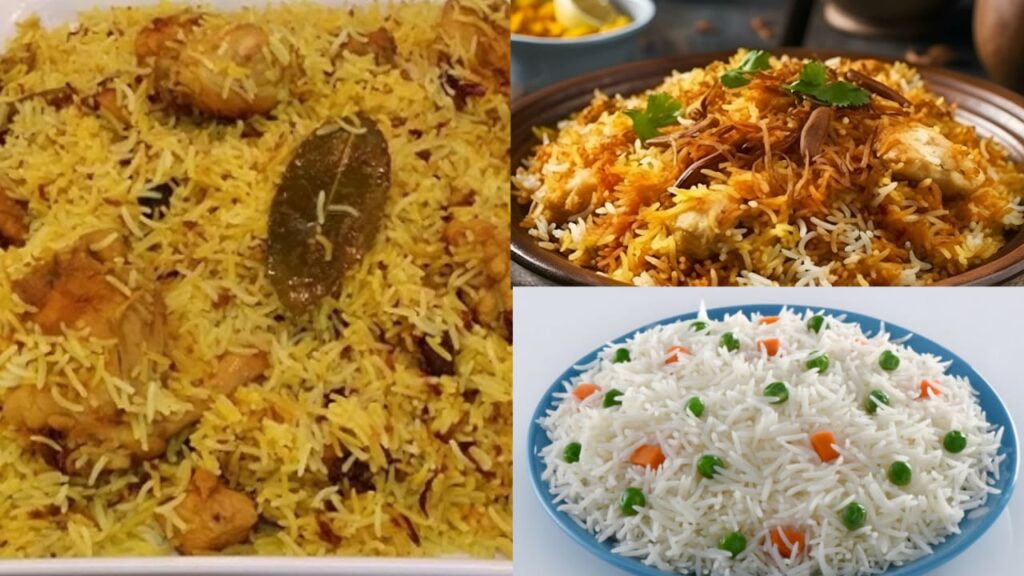
4. Economic Importance
India produces about 70% of the world’s total basmati rice production and it is one of India’s major agricultural exports. Every year, India exports millions of tons of basmati rice to countries like the Middle East, Europe and America, earning a huge amount of foreign exchange. Its premium quality also commands a high price in the international market. Millions of farmers and workers earn their living by cultivating, processing and exporting this rice.
5. Culture and Tradition
In the Indian subcontinent, Basmati rice is not just a food, it is a symbol of celebration and nobility. A feast is incomplete without biryani or pulao at weddings, Eids, pujas or any social event. From the kitchens of Mughal emperors to the special occasions of the common man today, Basmati has retained its royal place. Its aroma creates a festive atmosphere.
6. Challenges and Future
There are several challenges in cultivating Basmati rice. Climate change, water scarcity, disease and insect attacks hinder its production. Apart from this, the presence of fake or adulterated Basmati rice in the market is also a big problem, which tarnishes the reputation of genuine rice.
In the future, it is possible to protect its quality through the development of new climate-tolerant varieties, the spread of organic farming methods, and the proper application of Geographical Indication (GI) tags. If the right steps are taken, Basmati rice can maintain its global reputation.
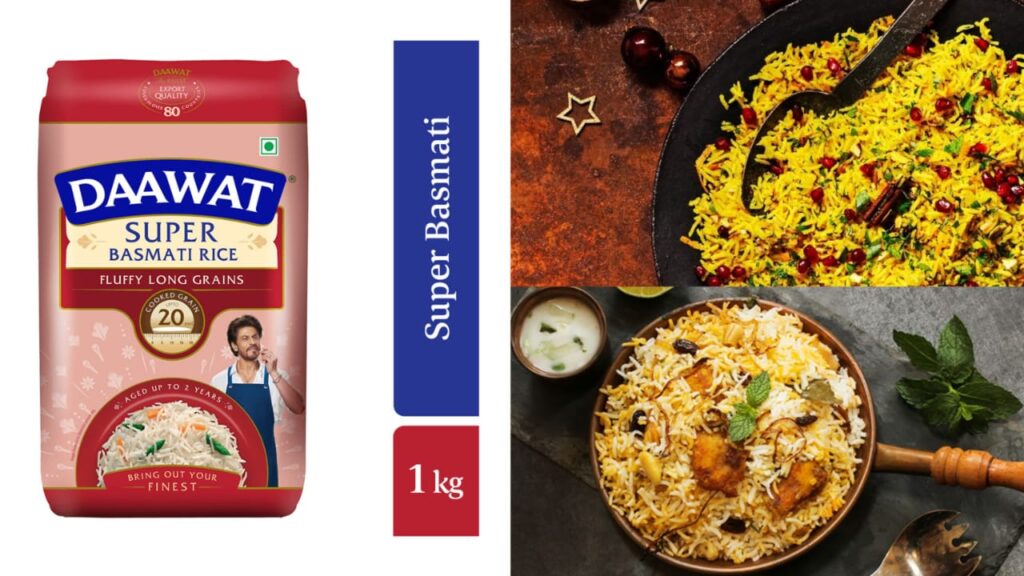
7. Benefits and Disadvantages of Basmati Rice
It’s crucial for the average person to understand this. Let’s take a look at its benefits and disadvantages.
Benefits:
Powerful source of energy:- The carbohydrates in it provide instant energy.
Promotes heart health:- The fiber and magnesium in brown basmati rice promote heart health.
Helps regulate blood sugar levels:- Its low glycemic index is beneficial for diabetics.
Improves digestion:- Fiber keeps the digestive process smooth.
Gluten-free:- It’s an excellent choice for those with gluten allergies.
Good for mental health:- The vitamin B content in it helps maintain a healthy nervous system.
Disadvantages or risks:
White basmati is a refined grain: Fiber and many nutrients are removed from white basmati rice. Therefore, eating it in excess can increase blood sugar levels and lead to weight gain.
Rich in Carbohydrates:- Although it has a low glycemic index (GI), it is essentially a carbohydrate-rich food. Therefore, diabetics and those trying to lose weight should eat it in moderation.
Expensive:- It costs significantly more than regular rice, making it difficult for many people to include it in their daily diet.
Problems of Overeating:- Excessive consumption of any food is harmful. Eating too much basmati rice can increase carbohydrate intake and lead to fat accumulation in the body.
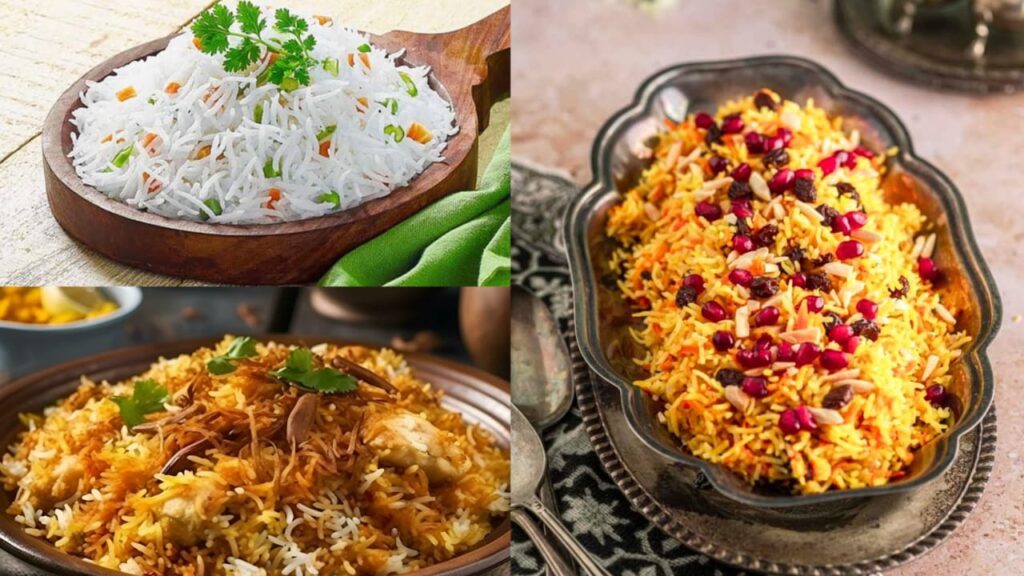
8. Proper Use as Food
To reap the full benefits of basmati rice, it is important to understand its proper use.
Consider portions:- It is best not to eat more than one cup of cooked rice at a time. Include adequate amounts of vegetables, pulses, and protein (fish, meat, eggs) in your diet along with rice.
Soak before cooking:- Washing and soaking rice for 30 minutes before cooking will result in longer, cleaner grains and faster cooking.
Add the right amount of water:- One and a half to two and a half cups of water is usually sufficient for one cup of rice.
Choose brown basmati:- If possible, choose brown basmati rice over white rice for everyday consumption. This will provide additional fiber and nutrients.

9. Main Products and Food Items
Here are some popular and delicious dishes made with basmati rice that are very popular among the general public.
Biryani:- This is undoubtedly the most famous basmati rice dish. It is cooked using the ‘dum’ method with spices along with meat or vegetables, and then a layer of undercooked basmati rice is placed on top. This allows the aroma and flavor of the spices to permeate each grain of rice. Hyderabadi, Lucknowi, or Kolkata—every region has its own variation of biryani, and crispy basmati rice is the mainstay of each.
Pulao:- This is a milder version of biryani. Rice is lightly sautéed with vegetables or meat, then cooked in water with aromatic spices (such as cardamom, cloves, and cinnamon). It’s a delicious accompaniment to any side dish or raita.
Kheer/Payash:- This is a traditional sweet dish made by slowly boiling basmati rice with milk, sugar, cardamom, nuts, and raisins. Its thick, creamy texture and rice aroma make it the perfect dessert for any festival.
Plain Steamed Rice:- Basmati rice is unmatched by white rice when paired with dal, curry, fish, or meat broth. Its mild aroma enhances the flavor of the main dish.
These foods are not only delicious, but can also be part of a balanced diet when eaten in the right amounts and with the right ingredients. For example, increasing the amount of vegetables in biryani or polava can make it healthier.
FAQ
#which basmati rice is best for biryani
#what is rozana basmati rice
#is basmati rice gluten free
#how to cook basmati rice in pressure cooker
#what is dubar basmati rice
#basmati rice gi tag which state
#1 kg basmati rice for how many persons can eat

